IL23, a member of the IL12 family, is a key cytokine in the promotion of chronic inflammation 13 More details Cell line description HEKBlue™ IL23 cells were generated by stable transfection of HEK293 cells with the human genes for the IL23 receptor and STAT3 to obtain a fully functional IL23 signaling pathwayDespite the fact that IL23 is not required for IL17 expression in this situation, IL23 may play a role in promoting survival and/or proliferation of the IL17 producing T cells Numerous immune regulatory functions have been reported for the IL17 family of cytokines, presumably due to their induction of many immune signaling molecules7/9/17 · IL23 signaling further promotes the expression of IL23R and consequently enhances the sensitivity of IL23 on those cells IL23 signals via pSTAT3/pSTAT4 heterodimers, which might regulate genes contributing to the encephalitogenicity Methods

Skewed Helper T Cell Responses To Il 12 Family Cytokines Produced By Antigen Presenting Cells And The Genetic Background In Behcet S Disease
Il 23 signaling pathway
Il 23 signaling pathway- · Genetic ablation of the IL12/IL23 signaling molecules p40, p35 or p19, in which deficiency of p40 or its receptor complex had the strongest effect, resulted in · IL23 signals through its heterodimeric receptor (IL23R) that is composed of two subunits IL12Rβ1, which is shared by IL12 receptor complex, and IL23R, which is the unique subunit The p19 subunit of IL23 heterodimer interacts with IL23R, whereas the p40 subunit interacts with IL12Rβ1 chain
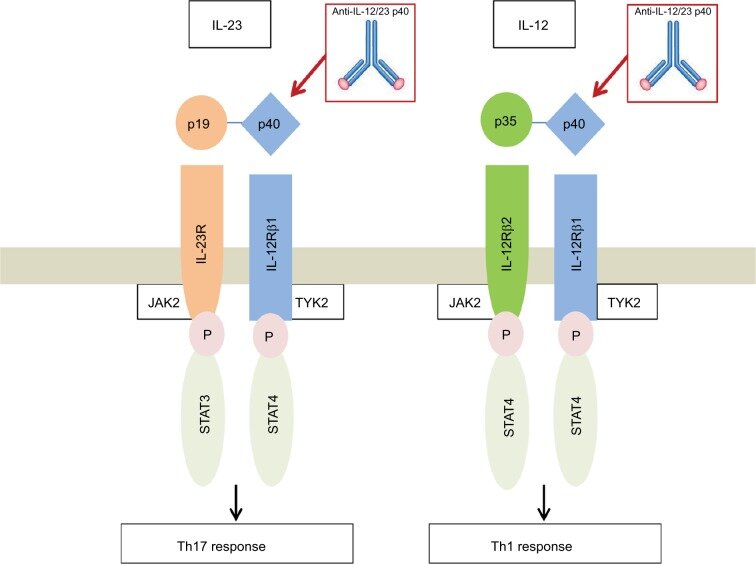



Schematic Representation Of Il 12 And Il 23 With Their Receptors And Download Scientific Diagram
IL17E/IL25 is the most divergent member of the IL17 cytokine family and promotes biological effects that are distinct from those induced by other IL17 family members IL17E signals through a receptor complex consisting of IL17B R/IL17RB and IL17RA Similar to IL17A, IL17E signaling requires ACT1, activates p38 MAPK, ERK, and NFkappa1/4/ · Interleukin12 (IL12) and IL23 are heterodimeric cytokines that are produced by antigenpresenting cells to regulate the activation and differentiation of lymphocytes, and they share IL12Rβ1 as a receptor signaling subunit · Second, IL‐23 signaling is essential for the persistent production of IL‐17A in CD4 T cells Although WT or rIL‐23‐conditioned autoreactive CD4 T cells induced comparable levels of cardiac inflammation in Il23a −/− recipients compared with WT recipients, they produced significantly lower levels of IL‐17A
· On the other hand, IL23IL23R signaling promoted GATA3 expression in vitro, but inhibited Tbet expression and enhanced Th2 differentiation Our17/6/13 · IL23 signaling also has been shown to play a vital role in IL17A, IL17F, interleukin 22, and IL21 production in other Tcell subsets, such as natural killer T cells and γδ T cells, as well as in the non–Tcell innate lymphoid cells4/4/17 · IL23 production and a full psoriasislike skin phenotype, in germfree and RIGI knockout mice, and RIGI is also critical for a full ral signaling in psoriasislike skin inflammation, we injected 50pppdsRNA (complexed with the cationic lipid LyoVec, 50pppdsRNA) or
5/7/18 · IRF1 The increased expression of IL23 also led to increased apoptosis in the liver By neutralization of IL23 through use of an antiIL23p19 antibody, we were able to attenuate liver damage in a wildtype but not a natural killer T (NKT) celldeficient mouse This suggests that IL23 signaling shares a common pathway with NKT cellsThe pathological consequences of excessive IL23 signaling have been linked to its ability to promote the production of inflammatory mediators, such as IL17, IL22, granulocytemacrophage colonystimulating (GMCSF), or the tumor necrosis factor (TNFα) by target populations, mainly Th17 and IL17secreting TCRγδ cells (Tγδ17)23/3/ · IL23 signaling triggers the production of secreted mediators such as IL17 and IL22, in proinflammatory, IL17secreting TCRγδ (Tγδ17), and in Th17 cells These proinflammatory mediators promote the rapid recruitment and activation of granulocytes and macrophages that eventually lead to the development of clinical symptoms




A Balance Of Interleukin 12 And 23 In Cancer Trends In Immunology




Interleukin 12 23 Deficiency Differentially Affects Pathology In Male And Female Alzheimer S Disease Like Mice Embo Reports
Recently, the Food and Drug Administration approved multiple highly effective psoriasis therapies that disrupt IL17 (secukinumab, ixekizumab, and brodalumab) and IL23 (guselkumab and tildrakizumab) signaling in the skin, thus leading to a major paradigm shift in the way that psoriatic disease is managedIL23 can activate similar signaling pathways as does IL12, although IL23 induces weak activation of STAT4 Rather, IL23 is a potent activator of the STAT3 transcription factor IL23 is produced by numerous cell types including activated macrophages and DCs23/3/ · Interleukin 23 (IL23) triggers pathogenic features in proinflammatory, IL17secreting T cells (Th17 and Tγδ17) that play a key role in the development of inflammatory diseases However, the IL23 signaling cascade remains largely undefined
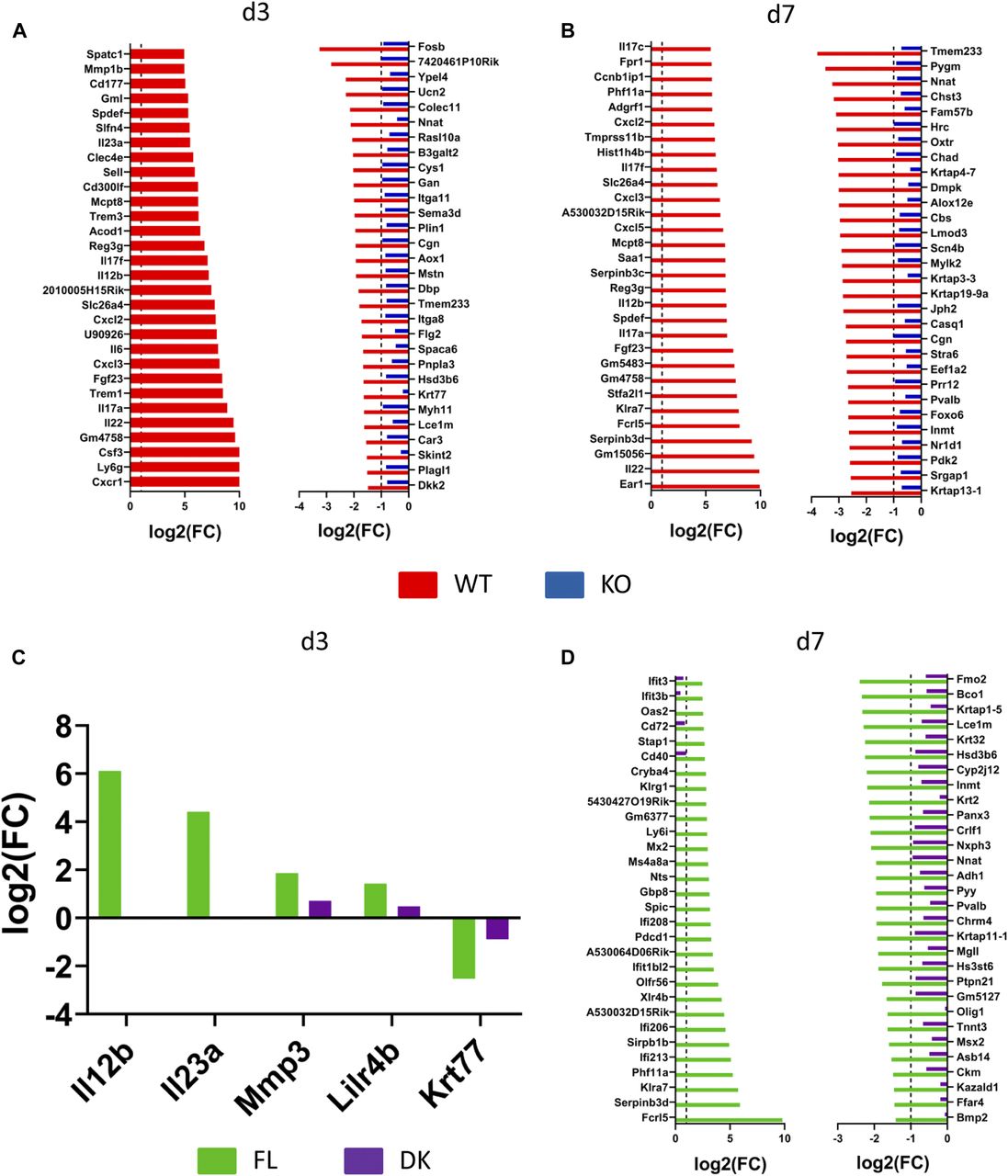



Il 36 Signaling In Keratinocytes Controls Early Il 23 Production In Psoriasis Like Dermatitis Life Science Alliance




Proposed Model For Extracellular Intracellular Gal 9 Trans And Cis Association With Tim 3 In Regulation Of Monocyte Inflammatory Cytokine Expressions Through Tlr Signaling
By using IL23deficient and IL23R transgenic mice, we have demonstrated that IL23IL23R signaling plays a critical role in allergic asthma In the absence of IL23, the development of airway inflammation was inhibited in a mouse model of allergic asthma25/3/21 · It has been suggested that IL23 also suppresses carcinogenesis and metastasis in mouse models, where it acts independently of IL17A (Teng et al, 10) Stat3 signaling shifts the balance between IL23 and IL12 toward IL23 in the tumor13/3/ · IL23 plays a role in a signaling pathway that triggers inflammation IL23 inhibitors block the action of IL23, which can help limit the inflammation that




Pdf Decoding Il 23 Signaling Cascade For New Therapeutic Opportunities Semantic Scholar




Schematic Representation Of Il 12 And Il 23 With Their Receptors And Download Scientific Diagram
Genetic studies in humans have linked the interleukin (IL)23 signaling pathway with IBD, but the environmental factors contributing to disease have remained elusive Here, we show that the azo dyes Red 40 and Yellow 6, the most abundant food colorants in the world, can trigger an IBDlike colitis in mice conditionally expressing IL23, or in two additional animal models in which IL23A member of the JAK family, Tyrosine Kinase 2 (TYK2) regulates both innate and adaptive immunity by mediating type I interferon, IL12 and IL23 signaling Selective inhibition of TYK2 without inhibition of other JAK family enzymes provides an optimal balance between reducing inflammation and preserving immune protectionThe pathological consequences of excessive IL23 signaling have been linked to its ability to promote the production of inflammatory mediators, such as IL17, IL22, granulocytemacrophage colonystimulating (GMCSF), or the tumor necrosis factor (TNFα) by target populations, mainly Th17 and IL17secreting TCRγδ cells (Tγδ17)




Paradoxical Gastrointestinal Effects Of Interleukin 17 Blockers Annals Of The Rheumatic Diseases




Signaling By Il 12 And Il 23 And The Immunoregulatory Roles Of Stat4 Watford 04 Immunological Reviews Wiley Online Library
2/11/10 · Associates with IL12RB1 to form the interleukin23 receptor Binds IL23 and mediates Tcells, NK cells and possibly certain macrophage/myeloid cells stimulation probably through activation of the JakStat signaling cascade IL23 functions in innate and adaptive immunity and may participate in acute response to infection in peripheral tissues5/3/21 · As reported recently, critically ill COVID19 patients show genetic polymorphisms in one IFN receptor gene (IFNR) and in a gene locus near the Janus kinase (JAK) TYK2, which is key for IFN, interleukin (IL)12 and IL23 signaling, and T helperIL23 is a covalently linked heterodimeric cytokine, which is closely related to IL12 Macrophages and dendritic cells are the major sources of both IL12 and IL23, which act on receptors primarily expressed by T cells, NK cells, and NKT cells IL23 consists of the p40 subunit shared with IL12 and the 19 kDa protein p19 that is unique to IL23




Leukotriene B4 Activates Intracellular Calcium And Augments Human Osteoclastogenesis Arthritis Research Therapy Full Text



Decoding Il 23 Signaling Cascade For New Therapeutic Opportunities Document Gale Onefile Health And Medicine
25/5/21 · The importance of the IL23 signaling pathway in other diseases has now been reported, including for cancer (Ngiow et al, 13) and cardiovascular disease (Ye et al, ) Ustekinumab and other antiIL23p19 inhibitors have been highly effective for the treatment of autoimmune dis24/4/ · JAKSTAT signaling transduces a variety of immune stimuli including cytokines such as interleukin23 (IL23) and IL2 In lymphoid cells, IL23 binding to its receptor, a heterodimer consisting of IL23R and IL12Rβ chains, activates a JAK2STAT3 pathway ( 2 ), whereas IL2 binding to the IL2R (consisting of α, β, and γ chains) activates a JAK1STAT5 pathway ( 3 , 4 )8/1/02 · IL23 can be distinguished from IL12 in that it increases the proliferation of memory T cells and their production of IFNγ, but has no effect on naïve cells Thus, depending on its partner (p19 or p35), the actions of p40 can be variable, with clear differences in the target cells that it
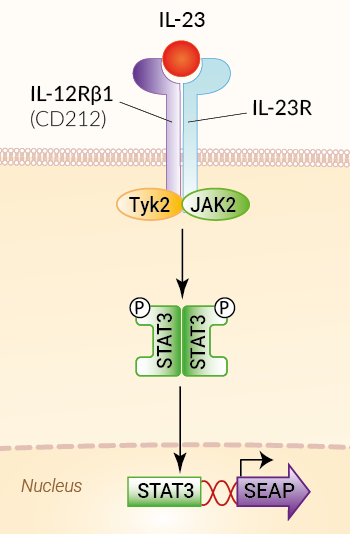



Hek Blue Il 23 Cells Il 23 Reporter Cells Invivogen




Pathcards Immune Response Il 23 Signaling Pathway Pathway And Related Pathways
28/9/ · Human IL23 is also active on cells expressing murine IL23 receptors and vice versa W156A substitution in human IL23p19 was sufficient to prevent signaling of cells expressing murine IL23 receptors, indicating differences in the binding interface of human and murine IL23 receptor complexesIn contrast, IL23 signaling is involved in the stabilization and maintenance of Th17 cells, promotes memory T cell activation, and stimulates IL17mediated neutrophil recruitment to sites of infection Although these activities demonstrate that IL12 and IL23 induce different immune responses, both can be characterized as proinflammatory1/9/19 · IL23 binds specifically to and signals through its heterodimeric receptor assembly which is composed of IL12Rβ1 and IL23R subunits 51 IL23 signals via its cognate receptor IL23R and the shared receptor IL12Rβ1 and is thought to mediate a stoichiometric ternary complex with the ectodomains of the two receptors
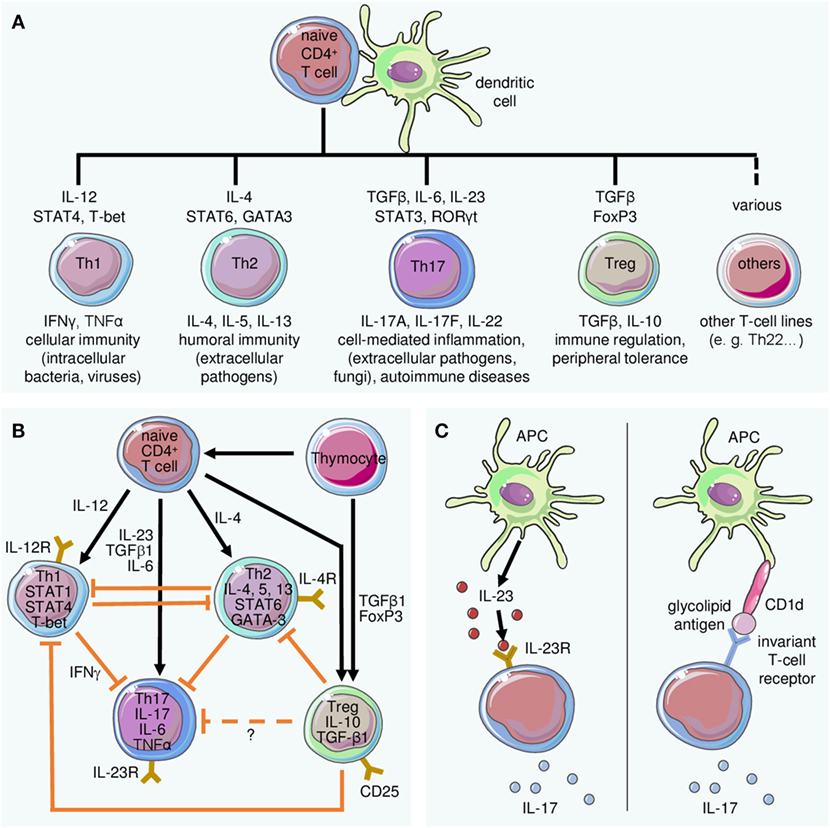



Frontiers The Interleukin 23 Interleukin 17 Axis Links Adaptive And Innate Immunity In Psoriasis Immunology




The Role Of Il 23 Receptor Signaling In Inflammation Mediated Erosive Autoimmune Arthritis And Bone Remodeling Razawy 18 European Journal Of Immunology Wiley Online Library
IL23 signaling pathway IL23 plays important role in expanding and maintaining the Th17 cell population, a novel Tcell subset involved in antimicrobial immune response and establishment of many autoimmune diseases 1 IL23 receptor is composed of IL12RB1 and IL23R IL23R associates with JAK2 and in a liganddependent manner with STAT3 2And IL23/STAT3pathways implicated in the differentiation of Th1 and Th17 cells In this study, we investigated the signaling properties of these pathways in T, B, and NK cells from patients with relapsingremitting MS (RRMS) and healthy controls, and assessed the genetic contribution14/2/18 · Chronic lymphocytic leukemia (CLL) cells are derived from B cells, but the exact signals that drive their expansion and survival are not completely understood Cutrona et al observed differential expression of the IL23 receptor on biopsies from earlystage CLL patients, and higher expression was associated with poor prognosis CLL cells could also produce IL23 in vitro




A Cytokine Network Involving Il 36g Il 23 And Il 22 Promotes Antimicrobial Defense And Recovery From Intestinal Barrier Damage Pnas
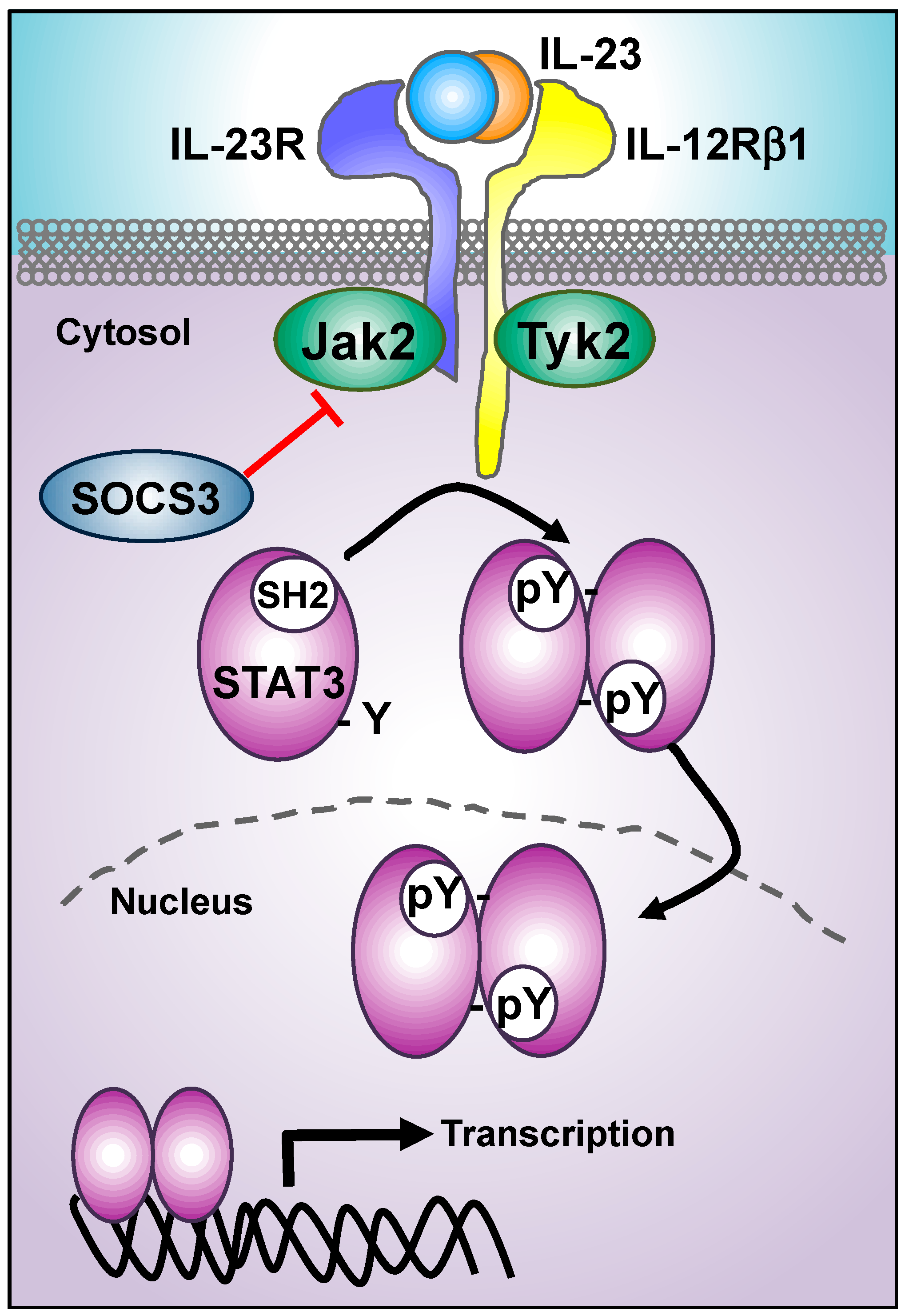



Cells Free Full Text Decoding Il 23 Signaling Cascade For New Therapeutic Opportunities
22/2/21 · The IL23 receptor (IL23R) is a heterodimeric receptor composed of 2 subunits IL12Rβ1, in common with the IL12 receptor (IL12R) and IL23Rα, specific to IL23 signaling Therefore, T cells lacking IL12Rβ1 cannot respond to IL12 nor IL233/5/21 · 8 Pathways in the Immune response IL23 signaling pathway SuperPath Development Angiopoietin Tie2 signaling Immune response IL23 signaling pathway Development PDGF signaling via STATs and NFkB Rac1/Pak1/p38/MMP2 pathway Immune response IL10 signaling pathway IL23mediated signaling events Angiopoietin receptor Tie2mediated signaling1/7/18 · IL23 and IL1β are the bestknown stimuli that lead to the activation and production of IL22 as well as other cytokines, such as GMCSF and IL17 Identifying other factors that activate ILC3s and the signaling pathways that lead to IL22 production is




Interleukin 7 Receptor Wikipedia




Pathophysiology And Inhibition Of Il 23 Signaling In Psoriatic Arthritis A Molecular Insight Sciencedirect
This protein pairs with the receptor molecule IL12Rβ1 , together forming the IL23 receptor complex, and both are required for IL23 signaling This protein associates constitutively with Janus kinase 2 ( JAK2 ), and also binds to transcription activator STAT3 in a liganddependent mannerIL23 binds to a heterodimeric receptor complex composed of IL12RB1 and IL23R, activates the JakStat signaling cascade, stimulates memory rather than naive Tcells and promotes production of proinflammatory cytokines1/3/11 · Materials and methods Human peripheral memory Th17 (CD4 CD45RO CCR6 ) and Th22 (CD4 CD45RO CCR6 CCR10 ) cells were FACSsorted and activated with antiCD3 plus antiCD28 for 3 days in the presence of IL23, IL1β, 6formylindolo3,2bcarbazole (FICZ), or combinationsPost culture, cells were analysed by flow cytometry for intracellular IL17A, IL22




Interleukin 21 Signaling Functions In Cancer And Autoimmunity Clinical Cancer Research




Stelara Ustekinumab For The Treatment Of Moderate To Severe Crohn S Disease Clinical Trials Arena
21/1/21 · IL17, IL23 Inhibitors May Outperform Older Biologics, Oral Therapies January , 21 Ilya Petrou, MD Ilya Petrou, MD Dermatology Times, Dermatology Times, February 21 (Vol 42, No 2), Volume 42, Issue 2 Several systemic therapies are currently available for the treatment of patients with moderatetosevere psoriasis1/6/ · Taken together, our results demonstrate that IL36R signaling in keratinocytes plays a major role in the induction of Aldarainduced psoriasislike dermatitis by triggering early production of IL23/IL17/IL22 cytokines and neutrophil infiltration IL36R signaling plays an important role in the pathogenesis of psoriasis




Il 22 There Is A Gap In Our Knowledge Immunohorizons
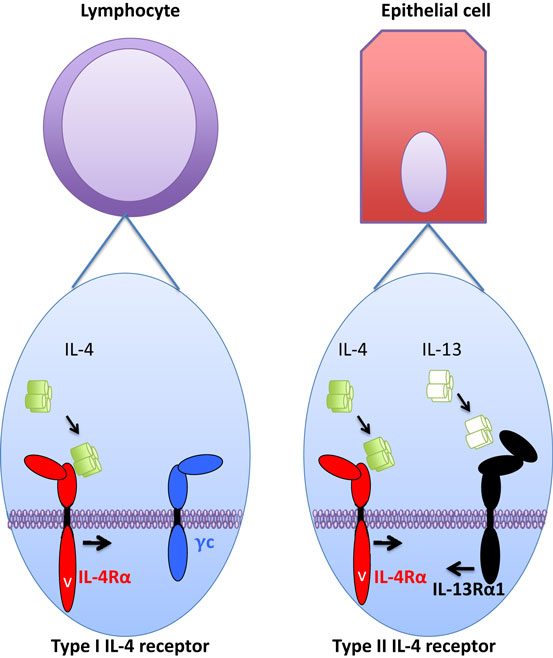



Frontiers Tuning The Cytokine Responses An Update On Interleukin Il 4 And Il 13 Receptor Complexes Immunology




Interleukin 35 Expanding Its Job Profile Journal Of Interferon Cytokine Research
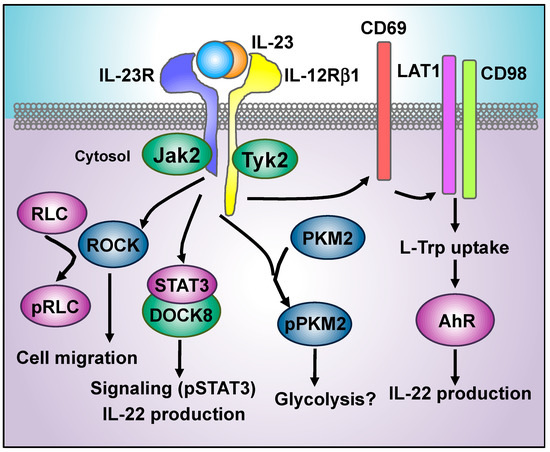



Cells Free Full Text Decoding Il 23 Signaling Cascade For New Therapeutic Opportunities Html




Il 12 Family Signaling Pathways R D Systems




Interleukin 12 Il 12 And Il 23 Signal Transduction Pathways Il 12 Download Scientific Diagram




Ustekinumab In Treatment Of Crohn S Disease Design Developmen Dddt




P38a Signaling In Langerhans Cells Promotes The Development Of Il 17 Producing T Cells And Psoriasiform Skin Inflammation Science Signaling




A Cytokine Network Involving Il 36g Il 23 And Il 22 Promotes Antimicrobial Defense And Recovery From Intestinal Barrier Damage Pnas




Regulation Of The Il 23 And Il 12 Balance By Stat3 Signaling In The




Xmlinkhub




Vitamin D Downregulates The Il 23 Receptor Pathway In Human Mucosal Group 3 Innate Lymphoid Cells Journal Of Allergy And Clinical Immunology
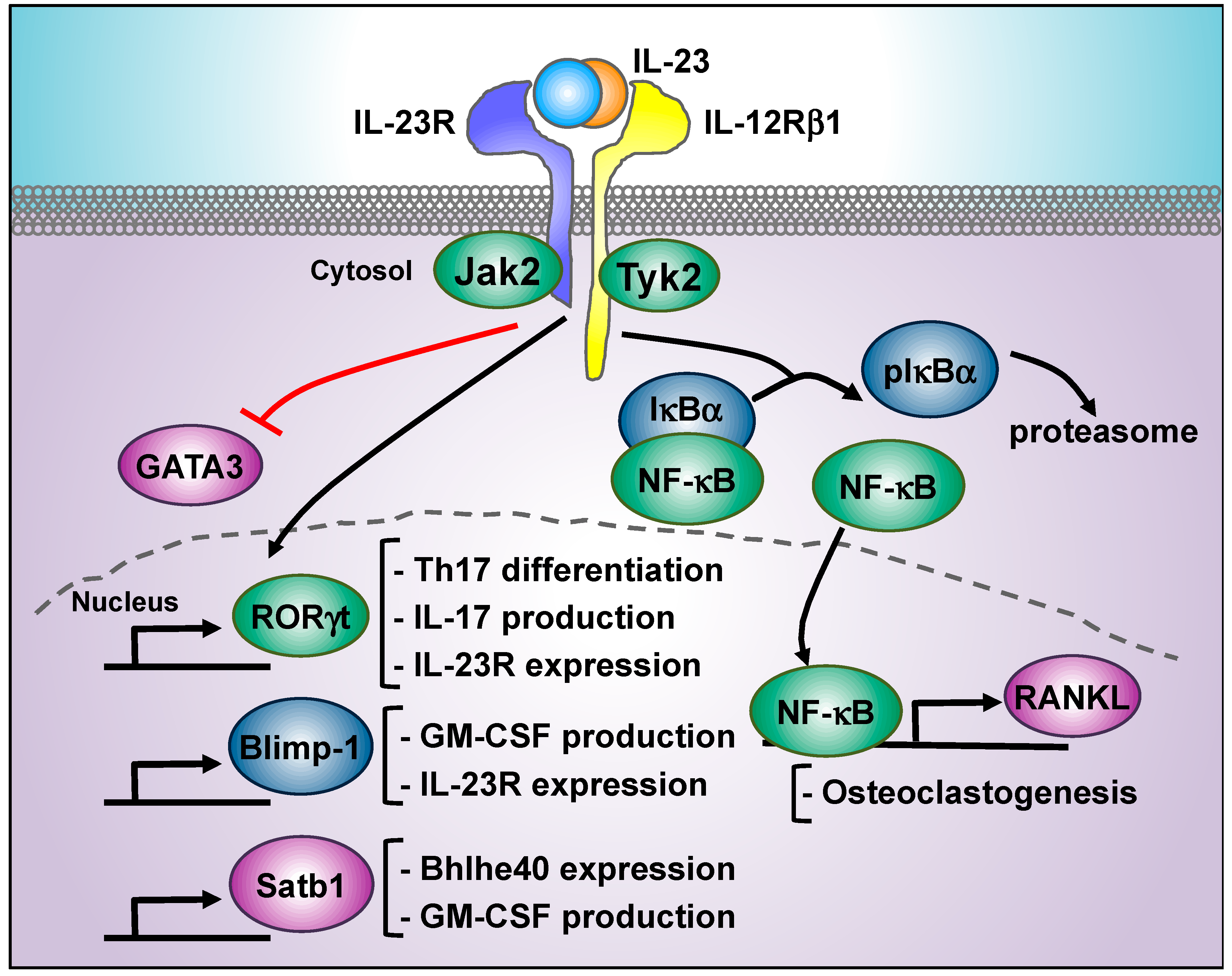



Cells Free Full Text Decoding Il 23 Signaling Cascade For New Therapeutic Opportunities



Plos Biology Il 23 Signaling Regulation Of Pro Inflammatory T Cell Migration Uncovered By Phosphoproteomics
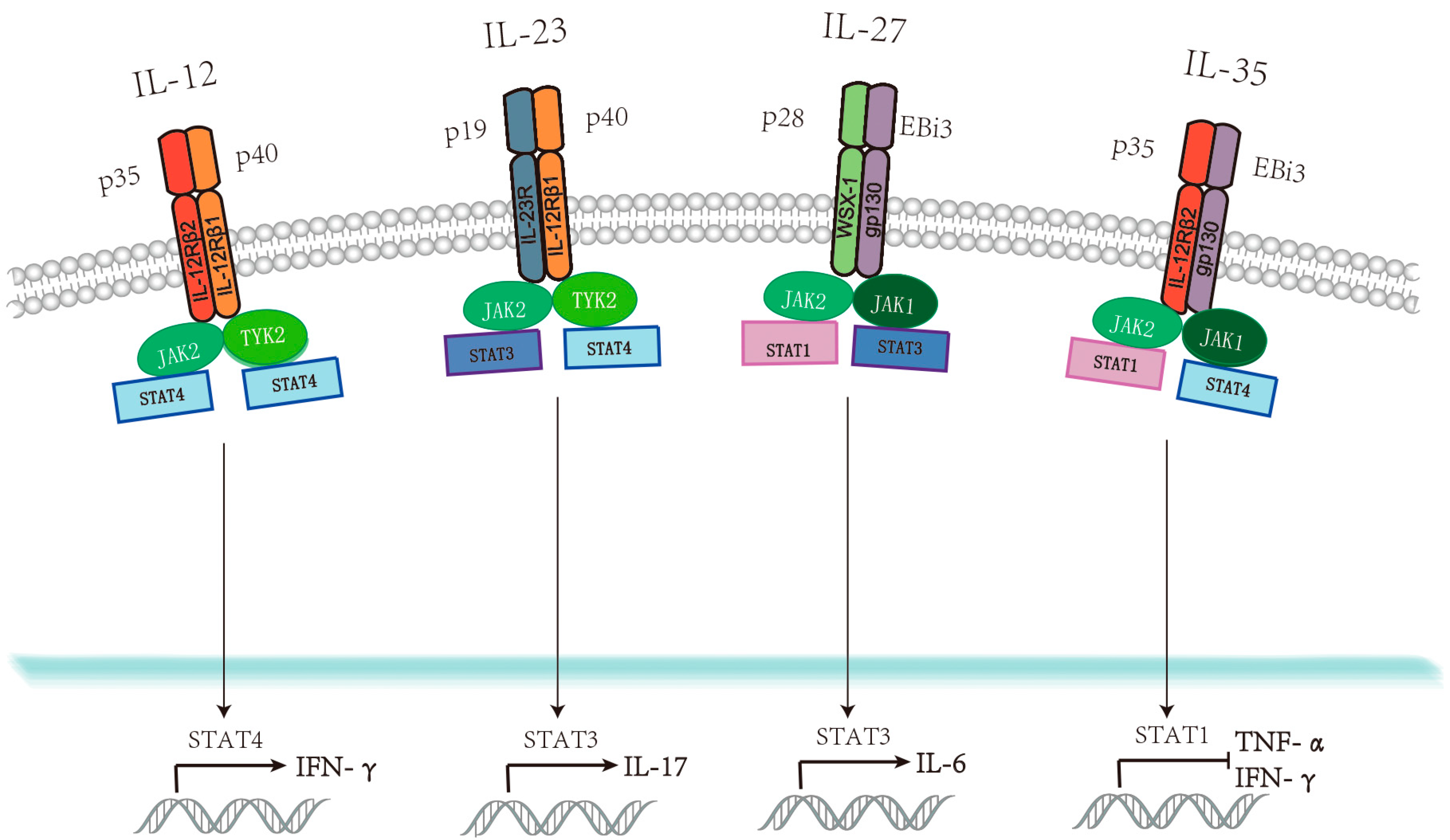



Viruses Free Full Text Immunoregulatory Functions Of The Il 12 Family Of Cytokines In Antiviral Systems Html




Stat3 And Nf Kb Signal Pathway Is Required For Il 23 Mediated Il 17 Production In Spontaneous Arthritis Animal Model Il 1 Receptor Antagonist Deficient Mice The Journal Of Immunology
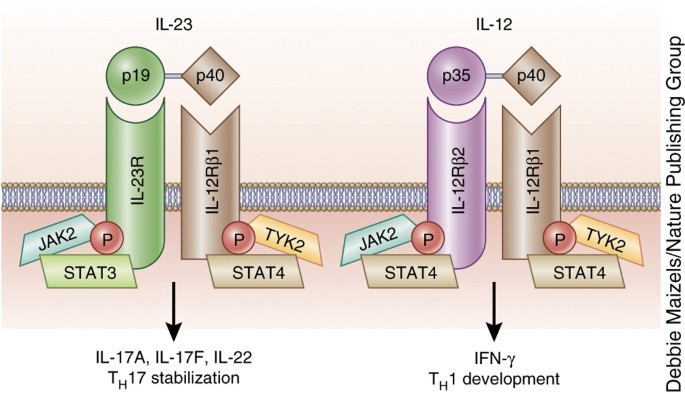



Il 12 And Il 23 Cytokines From Discovery To Targeted Therapies For Immune Mediated Inflammatory Diseases Nature Medicine
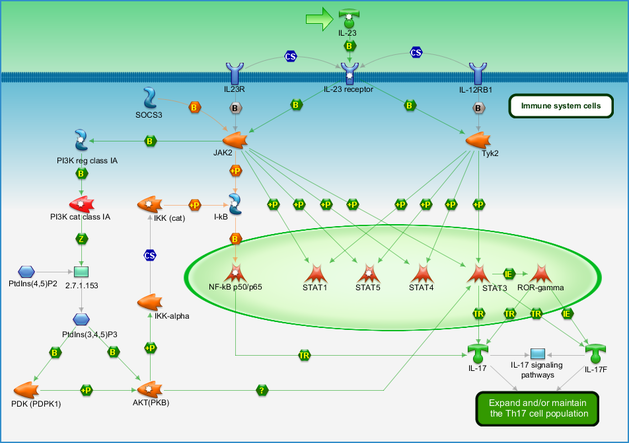



Immune Response Il 23 Signaling Pathway Pathway Map Primepcr Life Science Bio Rad




Skewed Helper T Cell Responses To Il 12 Family Cytokines Produced By Antigen Presenting Cells And The Genetic Background In Behcet S Disease




Il 12 Family Cytokines Receptors And Signaling Pathways Il 12 Download Scientific Diagram




Novel Pharmacological Approaches For Inflammatory Bowel Disease Targeting Key Intracellular Pathways And The Il 23 Il 17 Axis




Morphine Inhibits Murine Dendritic Cell Il 23 Production By Modulating Toll Like Receptor 2 And Nod2 Signaling Journal Of Biological Chemistry




Pathophysiology And Inhibition Of Il 23 Signaling In Psoriatic Arthritis A Molecular Insight Abstract Europe Pmc




Pleiotropic Targets The Problem Of Shared Signaling Circuitry In Rheumatoid Arthritis Disease Progression And Protection Future Medicinal Chemistry
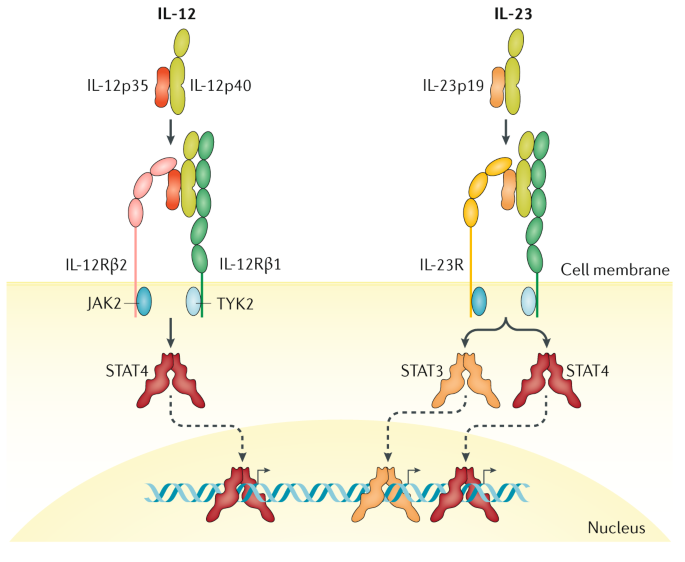



Il 12 Il 23 And Il 17 In Ibd Immunobiology And Therapeutic Targeting Nature Reviews Gastroenterology Hepatology




Targeting Janus Kinases And Signal Transducer And Activator Of Transcription 3 To Treat Inflammation Fibrosis And Cancer Rationale Progress And Caution Pharmacological Reviews




Interleukin Il 23 And Il 12 Composition Of The Il 23 And Il 12 Download Scientific Diagram




Stat3 And Nf Kb Signal Pathway Is Required For Il 23 Mediated Il 17 Production In Spontaneous Arthritis Animal Model Il 1 Receptor Antagonist Deficient Mice The Journal Of Immunology




Microenvironmental Regulation Of The Il 23r Il 23 Axis Overrides Chronic Lymphocytic Leukemia Indolence Science Translational Medicine




Il 23 Signaling Pathway Il 23 Is A Heterodimeric Cytokine Composed Of Download Scientific Diagram



Il 23 Signaling Regulation Of Pro Inflammatory T Cell Migration Uncovered By Phosphoproteomics




Genomics And The Multifactorial Nature Of Human Autoimmune Disease Nejm




Recent Insights Into The Genetics Of Inflammatory Bowel Disease Abstract Europe Pmc




Interleukin 23 Acts Directly On Podocytes And Contributes To The Development Of Glomerulonephritis Acr Meeting Abstracts




Understanding The Il 23 Il 17 Immune Pathway Sciencedirect




Cytokine Signaling Th17 Pathway




Interleukin 23 Drives Intestinal Inflammation Through Direct Activity On T Cells Sciencedirect




The Absence Of Il 23 Signaling Accelerates Progression Of Premalignant Oral Lesions Toward Cancer
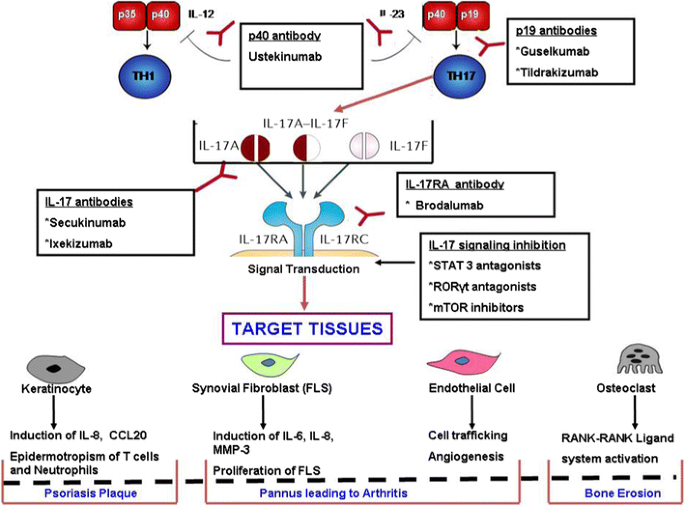



Il 17 And Its Receptor System A New Target For Psoriatic Arthritis Springerlink
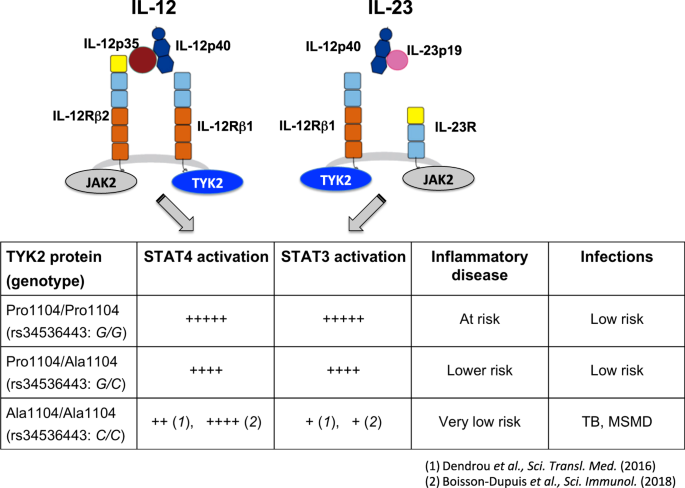



The Il 23 Il 17 Pathway In Human Chronic Inflammatory Diseases New Insight From Genetics And Targeted Therapies Genes Immunity
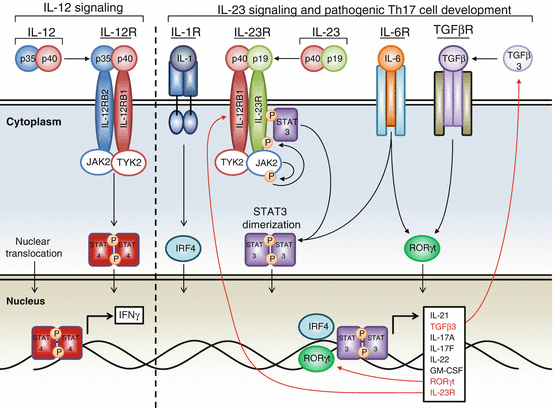



Il 23 In Health And Disease Springerlink



Possible Roles Of Il 12 Family Cytokines In Rheumatoid Arthritis Document Gale Onefile Health And Medicine
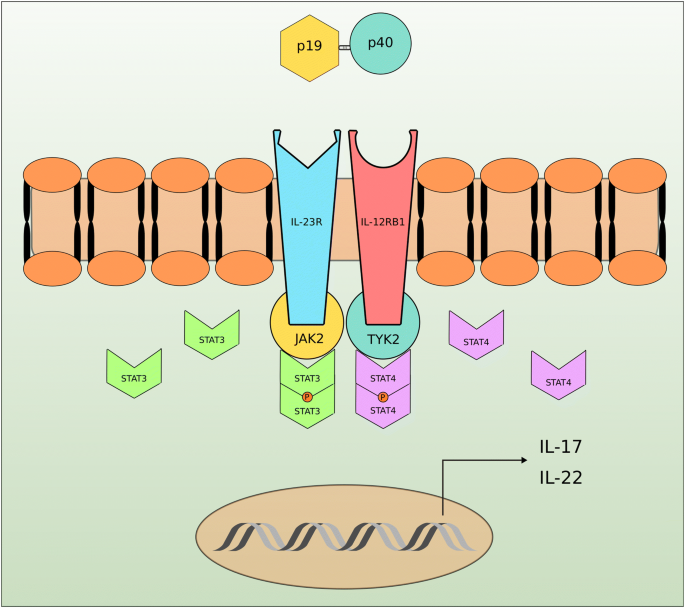



Interleukin 23 And Autoimmune Diseases Current And Possible Future Therapies Springerlink




Supplemental Materials For T Cell Intrinsic Prostaglandin E2 Ep2 Ep4 Signaling Is Critical In Pathogenic Th17 Cell Driven Inflammation Journal Of Allergy And Clinical Immunology




Interleukin 23 Wikipedia




Prostaglandin E2 And Il 23 Interconnects Stat3 And Rorg Pathways To Initiate Th17 Cd4 Sup Sup T Cell Development During Rheumatoid Arthritis Abstract Europe Pmc




Il 12 Family Signaling Pathway Sino Biological
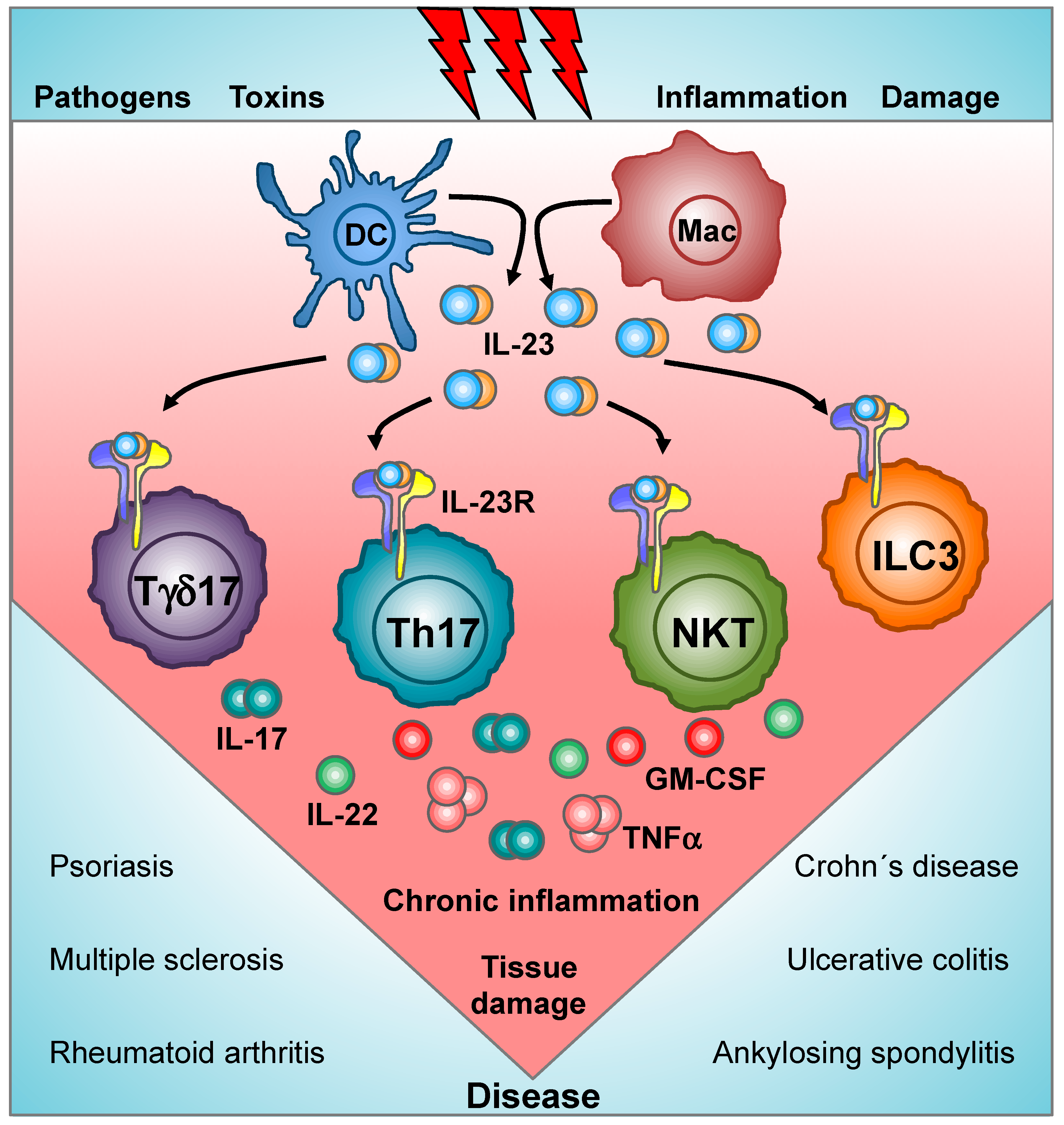



Cells Free Full Text Decoding Il 23 Signaling Cascade For New Therapeutic Opportunities




The Role Of Il 23 Receptor Signaling In Inflammation Mediated Erosive Autoimmune Arthritis And Bone Remodeling Razawy 18 European Journal Of Immunology Wiley Online Library
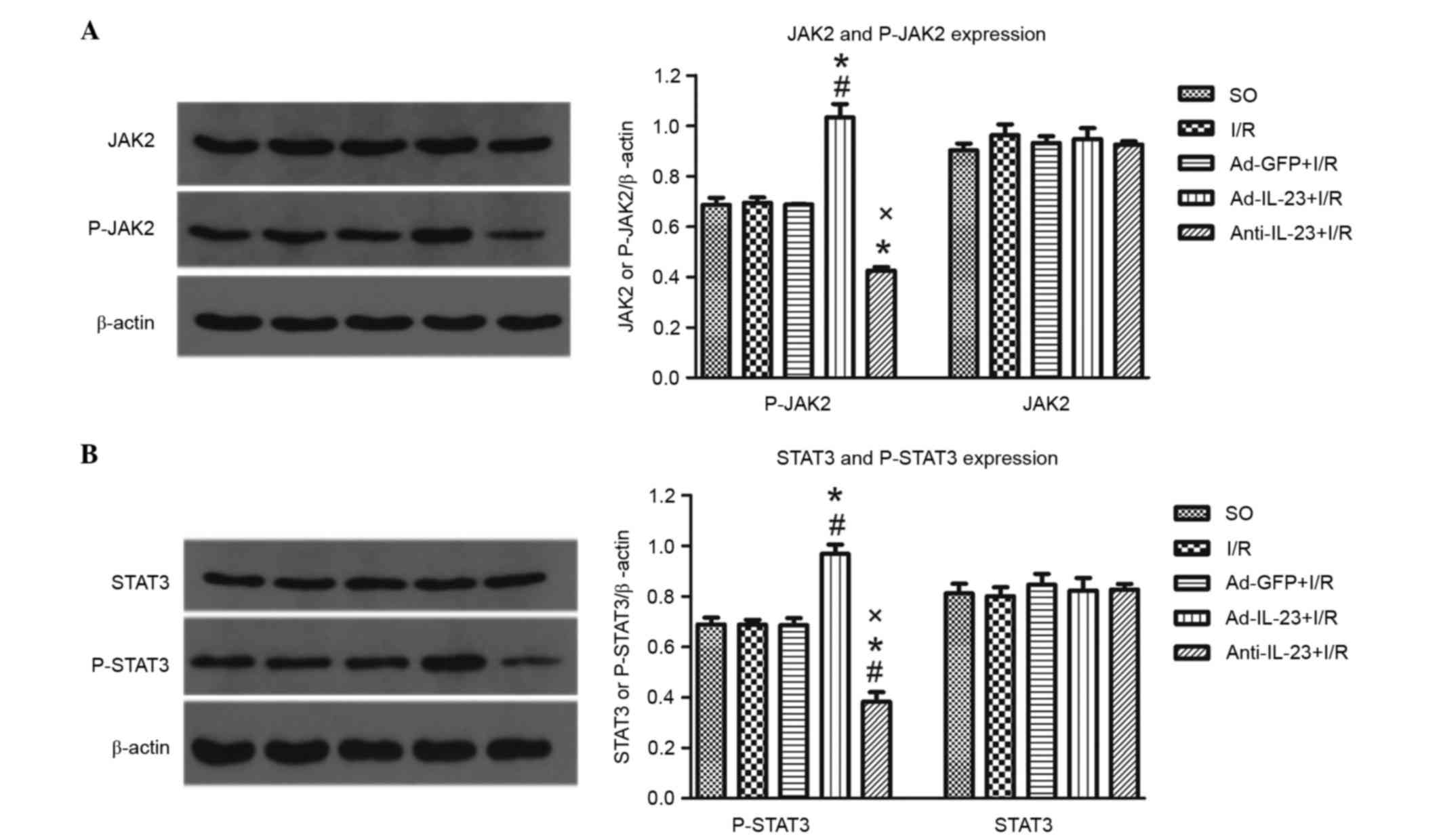



Promoting Effects Of Il 23 On Myocardial Ischemia And Reperfusion Are Associated With Increased Expression Of Il 17a And Upregulation Of The Jak2 Stat3 Signaling Pathway




Il 1r Signaling Promotes Stat3 And Nf Kb Factor Recruitment To Distal Cis Regulatory Elements That Regulate Il17a F Transcription Journal Of Biological Chemistry
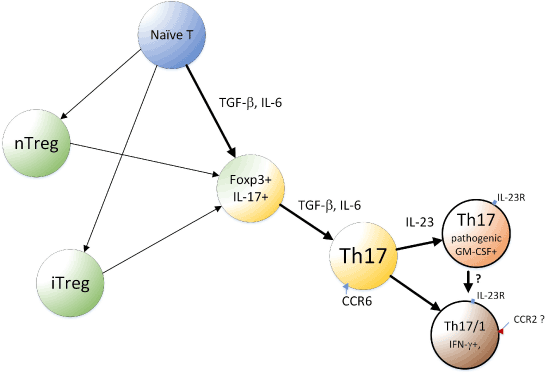



Factors Regulating Th17 Cells A Review
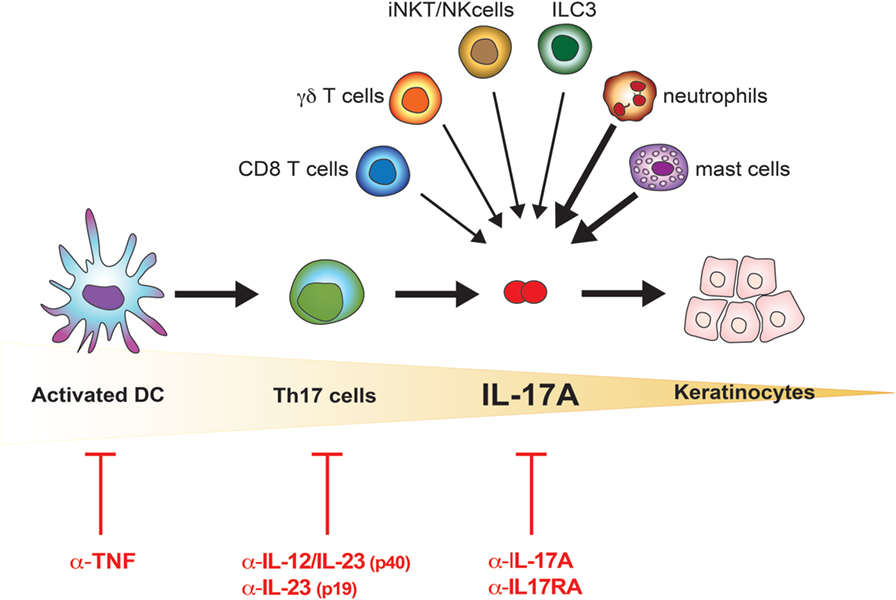



Frontiers The Il 17 Family Of Cytokines In Psoriasis Il 17a And Beyond Immunology




Figure 1 From Il 23 A Master Regulator In Crohn Disease Semantic Scholar
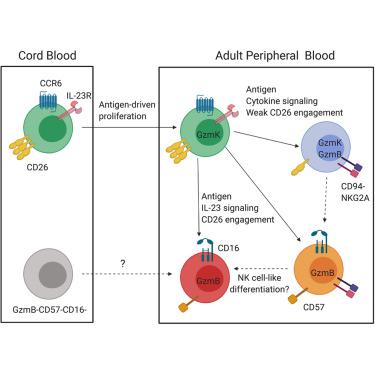



High Cd26 And Low Cd94 Expression Identifies An Il 23 Responsive Vd2 T Cell Subset With A Mait Cell Like Transcriptional Profile Cell Reports X Mol




Epithelial Il 23r Signaling Licenses Protective Il 22 Responses In Intestinal Inflammation Sciencedirect




The Il 23 Il 17 Axis In Psoriatic Arthritis Sciencedirect




Breaking The Immune Tolerance To Apoptotic Cancer Cells Ingested By Phagocytes




The Role Of Il 17a In Axial Spondyloarthritis And Psoriatic Arthritis Recent Advances And Controversies Annals Of The Rheumatic Diseases




Jci Tissue Specific Therapy In Immune Mediated Kidney Diseases New Arguments For Targeting The Il 23 Il 17 Axis



Plos Biology Il 23 Signaling Regulation Of Pro Inflammatory T Cell Migration Uncovered By Phosphoproteomics




Integrative Phosphoproteomics Links Il 23r Signaling With Metabolic Adaptation In Lymphocytes Scientific Reports




Tildrakizumab For The Treatment Of Psoriasis Immunotherapy




Rig I Antiviral Signaling Drives Interleukin 23 Production And Psoriasis Like Skin Disease Embo Molecular Medicine




Homeostatic Il 23 Receptor Signaling Limits Th17 Response Through Il 22 Mediated Containment Of Commensal Microbiota Pnas




Discovery Of The Il 23 Il 17 Signaling Pathway And The Treatment Of Psoriasis The Journal Of Immunology




Interactions Between Type I Interferons T1 Ifns And T Open I




Figure 1 From The Il 23 Il 17 Axis In Psoriatic Arthritis Semantic Scholar
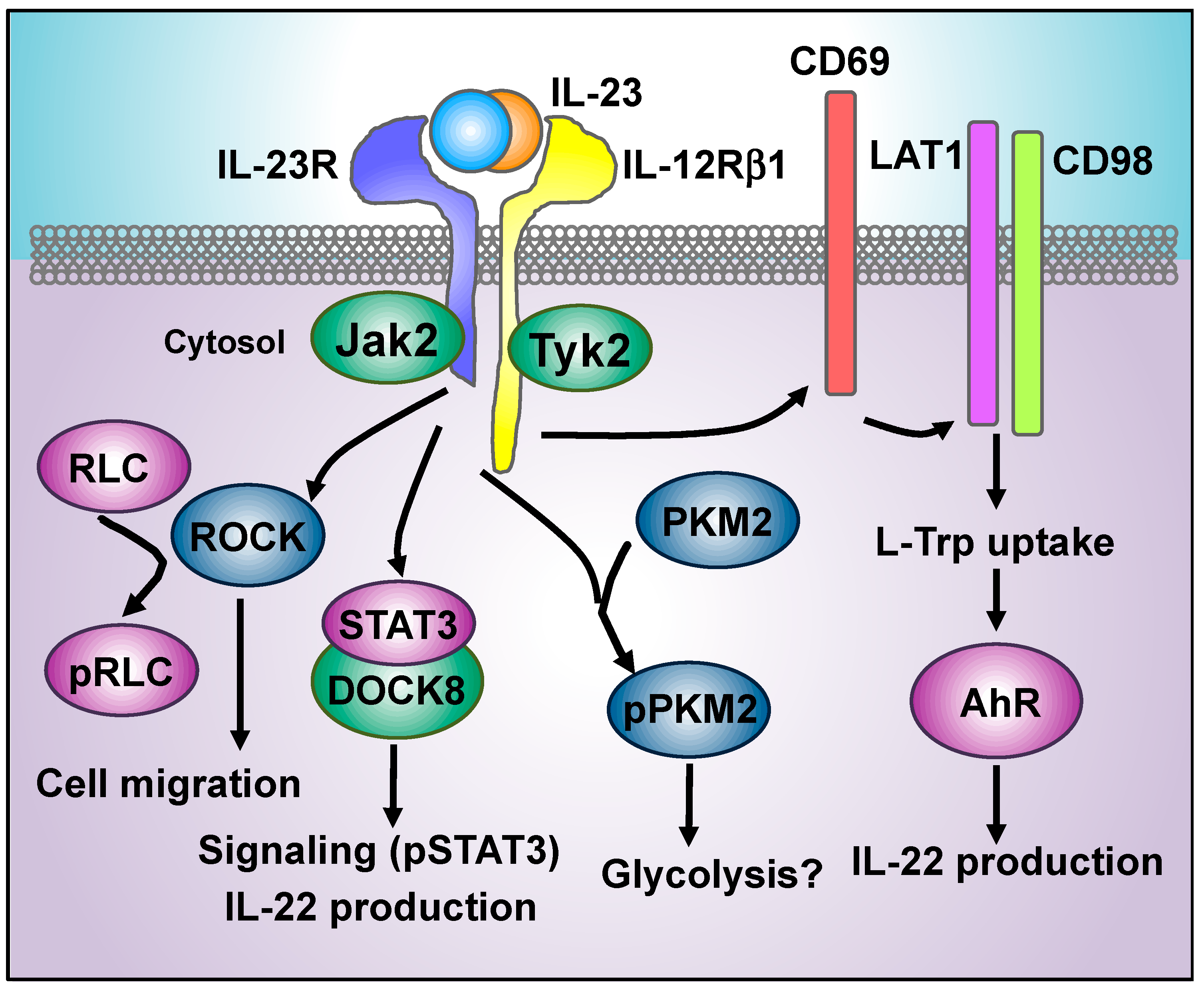



Cells Free Full Text Decoding Il 23 Signaling Cascade For New Therapeutic Opportunities



Il 23 Signaling Regulation Of Pro Inflammatory T Cell Migration Uncovered By Phosphoproteomics




Therapeutics Targeting The Il 23 And Il 17 Pathway In Psoriasis The Lancet




Il 23 Interleukin 23 Producing Conventional Dendritic Cells Control The Detrimental Il 17 Interleukin 17 Response In Stroke Stroke




Discovery Of The Il 23 Il 17 Signaling Pathway And The Treatment Of Psoriasis The Journal Of Immunology




Il 17 Signaling The Yin And The Yang Trends In Immunology
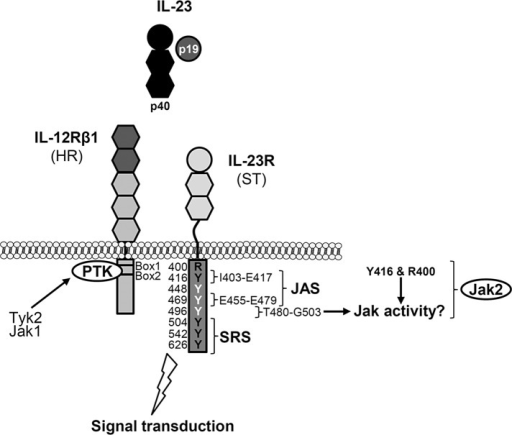



Overview Of Jak Binding Sites Within The Il 23 Receptor Open I



0 件のコメント:
コメントを投稿